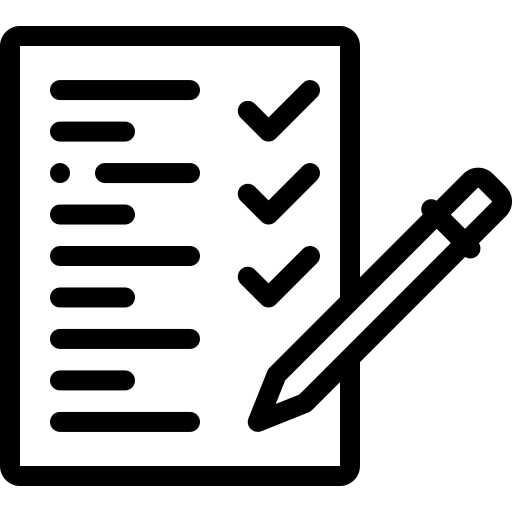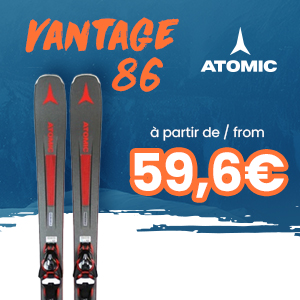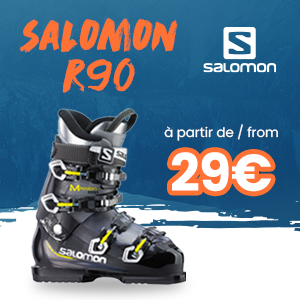
Understanding how to choose the right ski size can sometimes feel like deciphering a complex code, with recommendations varying slightly among experts. However, by simplifying the approach and focusing on the essentials such as the practical, THE level, and the specific needs, It's possible to navigate through the diverse range of models and find the ideal skis. Here's a practical guide, inspired by expert advice, to help you in this quest.
The first step is to define your dominant practice: downhill skiing, all-mountain skiing, freestyle skiing, or freeride skiing. Each ski category has specific characteristics that influence the choice of size. Also, be sure to honestly assess your skill level by asking yourself the right questions about your comfort level, speed, and ability to react to unexpected situations.
Defining your skiing style and level: The key to choosing your skis
Choosing the perfect size for your skis begins with introspection on your dominant skiing style and your actual skill level, two essential criteria that guide you towards the equipment best suited to your needs.
Identify your dominant practice
- • Downhill skiing: If you enjoy tight turns on groomed and marked slopes, opt for piste skis. These skis are designed to offer precision and responsiveness on hard-packed snow.
- • All-Mountain: Do you prefer versatility? All-mountain skis are designed to explore both groomed slopes and off-piste terrain. They offer a balance between maneuverability on groomed runs and float in powder.
- • Freestyle: For fans of snowparks, halfpipes, and jumps, freestyle skis with their flexibility and solidity allow you to execute tricks and landings with confidence.
- • Freeride: If you are drawn to off-piste adventure, in search of deep powder, freeride skis, which are wider, are designed to maximize float and stability in ungroomed snow.
Honestly assess your level
Knowing your skiing level is crucial for selecting the ski size that will promote your progress and enjoyment:
- • Assess your comfort level: Are you confident on green runs, but hesitant on red ones? Or do you carve with ease regardless of the slope ?
- • Consider your speed: The speed at which you ski influences the ideal ski length. The faster you ski, the more stability you need, which is often provided by slightly longer skis.
- • Responding to unforeseen events: Your ability to control your skis in unforeseen circumstances, such as avoiding a sudden obstacle or correcting a trajectory on a patch of ice, indicates your skill level and can guide you towards skis offering more or less forgiveness.
Men's skiing vs. women's skiing: A choice based on physiology
The distinction between men's and women's skis goes beyond visual design. Primarily, this difference lies in adapting to the average female skier's physique and weight, which tends to be lighter compared to men. This results in skis often designed to offer better handling and a flex tailored to women. In terms of sizing, the advice remains universal and applicable to everyone, emphasizing skill level and personal preference rather than gender.
Downhill skiing for fun
If your favorite playground is the slopes, and skiing means relaxation, family outings, or fun with friends, perhaps with a few bumps along the way, then recreational piste skis are for you. These skis are designed to be flexible and forgiving, allowing for a few mistakes without compromising the enjoyment. As for size, a ski that falls within between -5 and -15 cm The height below your expectations offers a good compromise between stability, maneuverability, and control.
Carving skis: for speed enthusiasts
Carving skis are designed for speed enthusiasts who want to carve precise turns on the slopes. Depending on whether you prefer tight slalom or wider turns, the recommended length varies. For slalom, opt for shorter skis. -20 to -15 cm in relation to your height. For wide turns like Super G, skis that are your height or very slightly shorter will be preferable.
All-mountain skis: adventure on all terrains
All-mountain skis are designed for those who love variety: groomed runs, off-piste, and everything in between. The key is to balance your preference for on-piste and off-piste skiing when choosing the size. Shorter skis are better for a piste-oriented approach (up to 10 cm shorter than your height), while longer skis are better for off-piste skiing (your height or up to 5 cm longer).
Freestyle: lightness and stability
In freestyle, choosing the right length prioritizes lightness for easier jumps and stability for landings. A ski your own height or slightly shorter (-5 cm) will be suitable for the snowpark, while for backcountry skiing, opt for a longer ski with a wider waist for better float in powder.
Freeride: the quest for powder
Freeriding encompasses a wide range of off-piste skiing. Freeride skis, with their wide waist, provide excellent float in fresh snow. Depending on your style, the length can vary from your height up to +15 cm to ensure both maneuverability and stability in varying conditions.
Children's skis: for little glides and big thrills
Follow the progress of young skiers
Choosing the right ski size for young skiers is essential, not only for their safety on the slopes but also to encourage smooth progression in their skiing lessons. Children grow quickly, and their skills evolve each season; therefore, it's important to adapt their ski size accordingly.
For beginners and toddlers
First skiing experiences should be fun and reassuring. For children discovering the joys of snow, opt for short skis that don't extend past their chest. This reduced length makes the skis more maneuverable, facilitating first turns and balance. It's also an effective way to limit speed, allowing young skiers to feel confident right from the start.
Growth and progression
As your child grows and their skills improve, their ski length should change accordingly. For a child who is starting to master turns and explore new slopes, chin-length skis are ideal. This length offers a good balance between control and the ability to safely pick up speed.
For young sporty skiers
Children who show a passion and talent for skiing, and who are eager to push their limits, can benefit from slightly longer skis, reaching or slightly exceeding their chin. This increased length provides better stability at higher speeds and improves performance on more technical slopes. It also serves as suitable preparation for transitions to junior or adult skis, depending on their height and weight.
Summary table: Finding your ideal ski size
Choosing the right ski size is crucial for an optimal experience on the snow. This chart provides a quick reference to identify the ideal ski size based on your skiing style and skill level.
| Practical | Level | Recommended size |
|---|---|---|
| Downhill skiing | Beginner | -15 to -10 cm |
| Intermediate | -10 to -5 cm | |
| Expert | -5 cm to skier's height | |
| All-mountain | Beginner | -10 to -7 cm |
| Intermediate | -7 to -3 cm | |
| Expert | -3 cm to +5 cm | |
| Freestyle | All levels | -10 to -5 cm |
| Freeride | Beginner | -5 to 0 cm |
| Intermediate | 0 to +5 cm | |
| Expert | +5 to +10 cm | |
| Children | < 10 years | Up to the chin |
| 10-13 years old | From chin to nose | |
| > 13 years old | Adult recommendations |
Advice : The sizes are given in relation to the skier's height.

In short
- • Avoid relying solely on general recommendations for ski size, due to the variety of important criteria to consider.
- • Conduct a thorough assessment of your aspirations, abilities, and personal preferences.
- • Clarify your specific objectives:
Improve your technique
Increase your speed
Choose skis that are easy to handle
Opt for lightweight skis - • Consider the following questions:
Your current skiing level
The types of terrain you prefer
The specific characteristics of the skis you are looking for - • Adopting a thoughtful and personalized approach for a judicious selection, leading to an enhanced skiing experience that is true to your needs.





